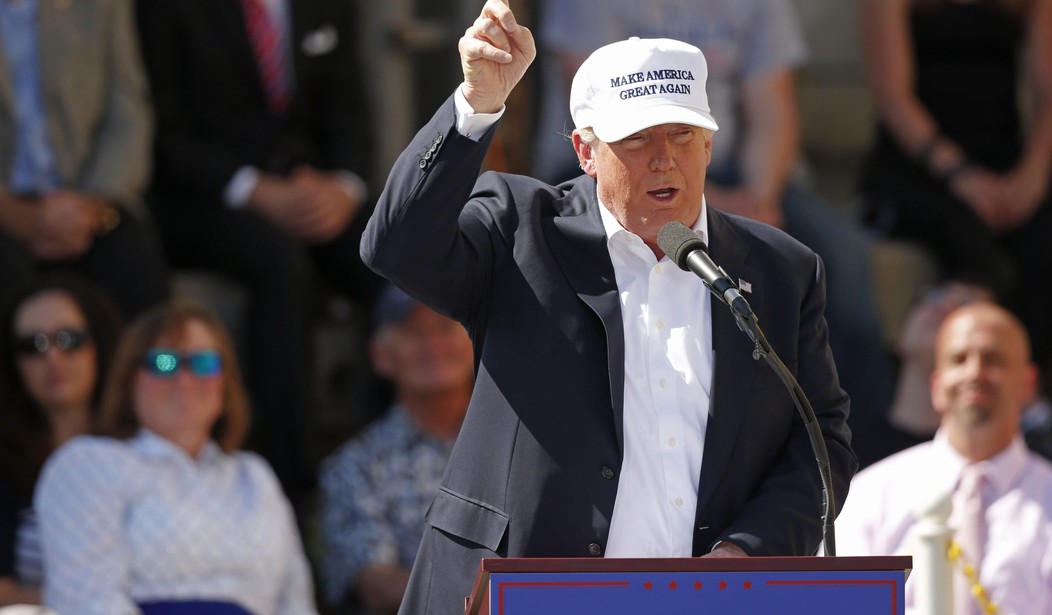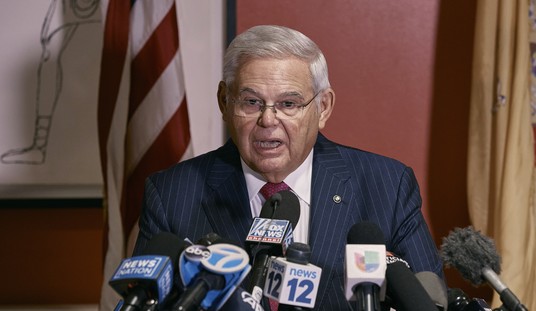Donald Trump’s presidential victory came as a surprise. The media had built up Clinton’s inevitability, and the polls gave her a clear lead. But even before the surprising results came in, pollster Nate Silver noted three major reasons to doubt the polls’ predictive certainty.
As voters headed to the polls on Tuesday, FiveThirtyEight gave Clinton a 72 percent chance of winning and estimated that she would win an average of 302 electoral votes.
Nevertheless, Silver emphasized three large caveats: that Clinton’s lead was in the margin of error, that the number of undecided and third-party voters was large and likely to skew one way or another, and that Clinton’s coalition was not well suited to delivering an Electoral College victory.
These are important caveats, and they show the unavoidable weaknesses of polling. A final weakness had been long spoken of within the Trump camp — what might be called the “Brexit” effect. Trump voters might not identify as such in polls, for important reasons.
These factors combined to destroy the assumptions which pollsters routinely make, and to undercut the predictive power of polling. In other words, pollsters are not to blame that they were wrong, and we should not take the results of this election as proof that in the indelicate words of Sarah Palin, “polls are for strippers and cross-country skiers.”
Here are 4 reasons why, with all respect to PJ Media’s own Michael van der Gailen, this election did not prove that we shouldn’t trust the polls.
1. The margin was closer than you think.
On average, presidential election polls taken the week before the election have been wrong by about 2 percentage points. The error has been even farther off in the most recent presidential elections. In 2000, George W. Bush led Al Gore in the polls by 3 percentage points. Then he lost the popular vote. In 1996, polls underestimated Bill Clinton’s re-election by 3.3 percent.
Polls had Ronald Reagan winning in 1980, but they underestimated his margin of victory — by 7.2 percent!
This means that when the polls overestimated Clinton’s support by 3 percentage points, they were in keeping with the historic margin of error in presidential elections. According to the RealClearPolitics average, Clinton led Trump by 3.2 percent in the polls, and beat him in the popular vote by 0.2 percent.
This three-point difference is one of the major reasons why, even when sites like FiveThirtyEight were rather confident Clinton would win, they still gave Trump about a 30 percent chance of winning. Don’t discount that chance — it’s a great deal higher than zero.
7:40 update. #ElectionNIght https://t.co/4dfUMs75Cj pic.twitter.com/JkjGnvTJj5
— FiveThirtyEight (@FiveThirtyEight) November 9, 2016
Next Page: Undecided voters.
2. The large number of undecided voters.
In 2016 presidential polls, a full 12 percent of voters were undecided. By comparison, the last three elections have had between 3 and 4 percent undecideds (2004: 3.7 percent, 2208: 3.4 percent, 2012: 3.1 percent). Even 2000 — that historically fascinating election — only had 9.6 percent undecided voters.
Undecided voters make for a more uncertain outcome. If two-thirds of them broke for Trump, he would eke out a win. If two-thirds of them broke for Clinton, she would win by a landslide. According to results so far, third-party candidates took a small percentage of these voters, while Trump seemed to have attracted a great deal. That’s important — and not something that polls can entirely predict.
Nate Silver candidly admitted that this presence of undecided voters contributed significantly to the uncertainty in FiveThirtyEight’s forecast. That doesn’t mean polls aren’t trustworthy — it just means that undecideds broke Trump.
3. Clinton’s coalition and the Electoral College.
Early voting numbers suggested an interesting demographic shift: more Hispanic voters, more white voters, and fewer black voters than in 2012. This was quite simply Yuge, because it suggested a much more competitive Electoral College battle.
As Nate Silver pointed out last week, many of Clinton’s vote gains over Barack Obama’s 2012 showing came in states that she was going to win anyway (like California) or where her gains would not make a big enough difference to swing a state (like Texas). The drop in black turnout was particularly significant — while Clinton would have represented Obama’s electoral legacy, that wasn’t enough to drive the kind of vote totals that boosted him to victory.
Silver actually predicted a few of last night’s surprises in discussing Clinton’s weaknesses compared to Obama. “Speaking of Pennsylvania, Clinton’s polling lead is narrower there than Obama’s was,” Silver noted. Meanwhile, “She’s polling a little better than Obama was in the highly educated swing states of Virginia, North Carolina and Colorado.”
Trump’s Pennsylvania win pushed him over the edge, after the Republican took Florida, Ohio, and Wisconsin. While Clinton lost North Carolina, her victories in Virginia and Colorado, as Silver predicted, proved insufficient to give her the presidency. It seems a realignment has occurred: Virginia and Colorado are not quite “swing” states, while Pennsylvania and Wisconsin seem likely to replace them.
Polling could not have entirely predicted this outcome, but Silver pointed out the weaknesses in Clinton’s electoral map before the returns started coming in.
Next Page: The American Brexit and why Trump voters lied to pollsters.
4. The Brexit effect.
Many of us were more than a little skeptical when Donald Trump called himself “Mr. Brexit,” but it seems he was very right. As Kellyanne Conway noted last night, “the silent Trump voter” was among the “things that were true.”
Things that were true: undercover Trump vote; @mike_pence for VP; Hillary's floor & ceiling r same; rally crowds matter; we expanded the map
— Kellyanne Conway (@KellyannePolls) November 9, 2016
There are two kinds of social desirability bias to which polling can never be immune: the natural urge to say you’re with the winner, and the desire to avoid insult and abuse. With Clinton denouncing Trump supporters as a “basket of deplorables,” poll respondents might have hesitated to declare themselves for Trump due to the social backlash. With the media so certain of a Clinton victory, they may also have wanted to say “I’m with her,” because everybody likes a winner.
Clinton was seen as the politically correct candidate — the first woman president and the inclusive voice of “stronger together.” She also began the race as a favorite, with Obama’s increasing approval rating and with a better organized, better funded campaign. A vote for her wasn’t just virtuous, it was safe.
But on Election Day, voters didn’t want safe, or at least they didn’t want the unstable safety of Hillary Clinton. Like in Britain, American voters preferred the politically incorrect change, and the false security of the Clinton campaign may well have been its undoing.
5. A note about sample sizes.
One final note: Many of the polls were based on projections of voter turnout, that it would mimic the results of the 2012 election. Thus, conservatives complained that sample sizes skewed Democrat and attacked the polls as inherently biased.
This is actually good practice in polling, however. More Americans self-identify as Democrats than as Republicans, and the 2012 turnout was likely to be repeated in another presidential election year.
Those demographics did not hold for this November, however, as I predicted in September of last year. I nevertheless defend the practice of using a benchmark like the 2012 election to guide sampling in polls.
At the same time, modern polling often focuses too much on sampling, to the exclusion of truths pollsters may not want to hear. The practice of “raking” poll results likely kept these key changes in enthusiasm in the 2016 electorate more silent than they should have been. “Raking” takes place when a poll suggests a trend that doesn’t fit the benchmark (in this case the 2012 election). In order to “correct” the results of the poll, pollsters give more weight to less-represented groups, thus skewing the raw results they first collected.
This practice is defensible, but I would not be surprised to find that it’s one of the key reasons why polls did not predict a Brexit-like turnout among white working class voters.
The polls did underestimate Trump’s support, but not by a margin that suggests the practice of polling and predicting elections is worthless and should be abandoned. Tuesday night was a big surprise, but it should not lead Americans to reject polling as such. Rather, it should be taken as just one more reminder of how little we can know for certain — even when using the most scientific methods.
This humility when it comes to human knowledge is fundamentally important, and if we learn nothing else from this election, let us learn to acknowledge the limits of our own certainty.









Join the conversation as a VIP Member